Laser Cut Hippo
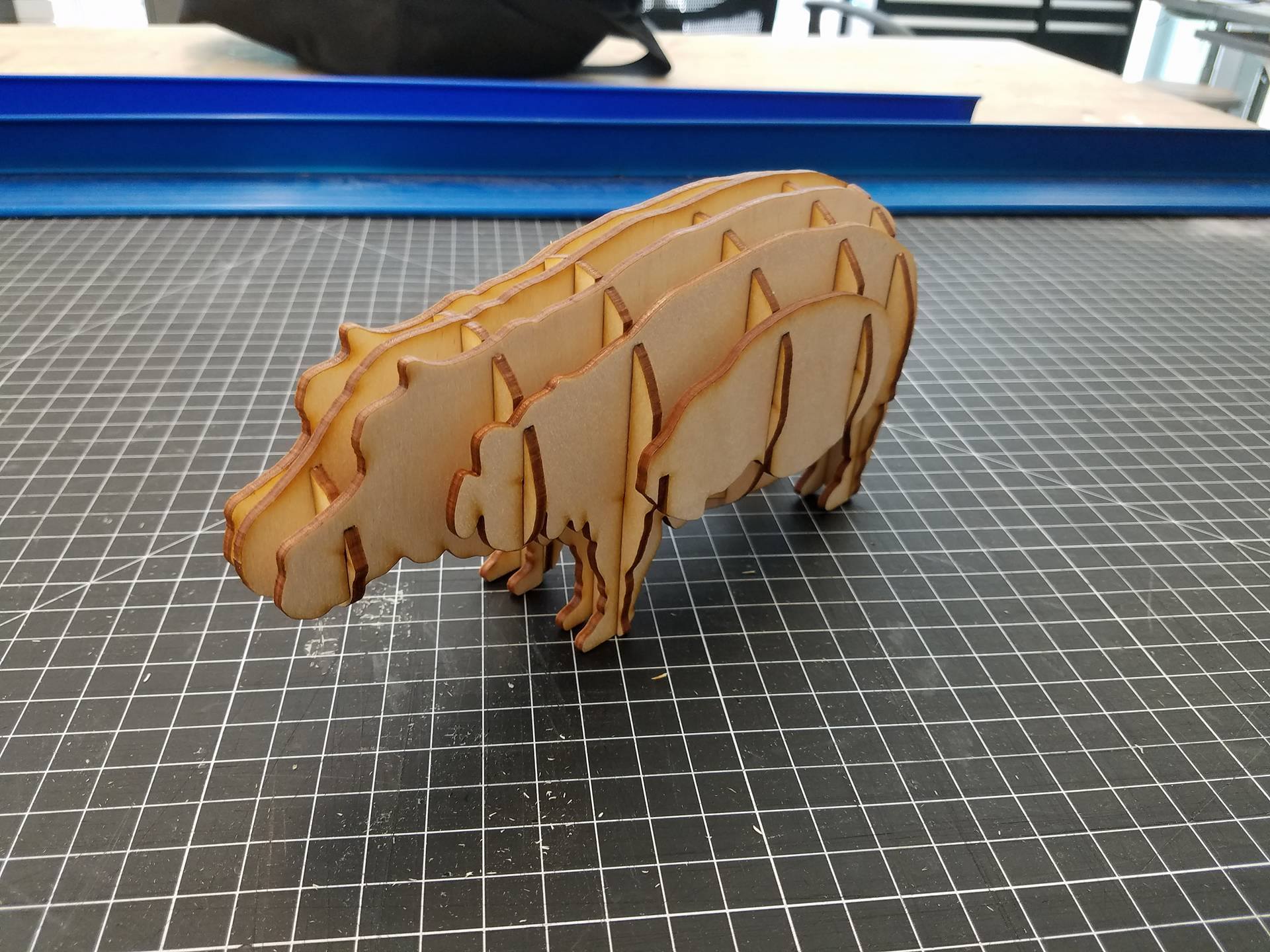
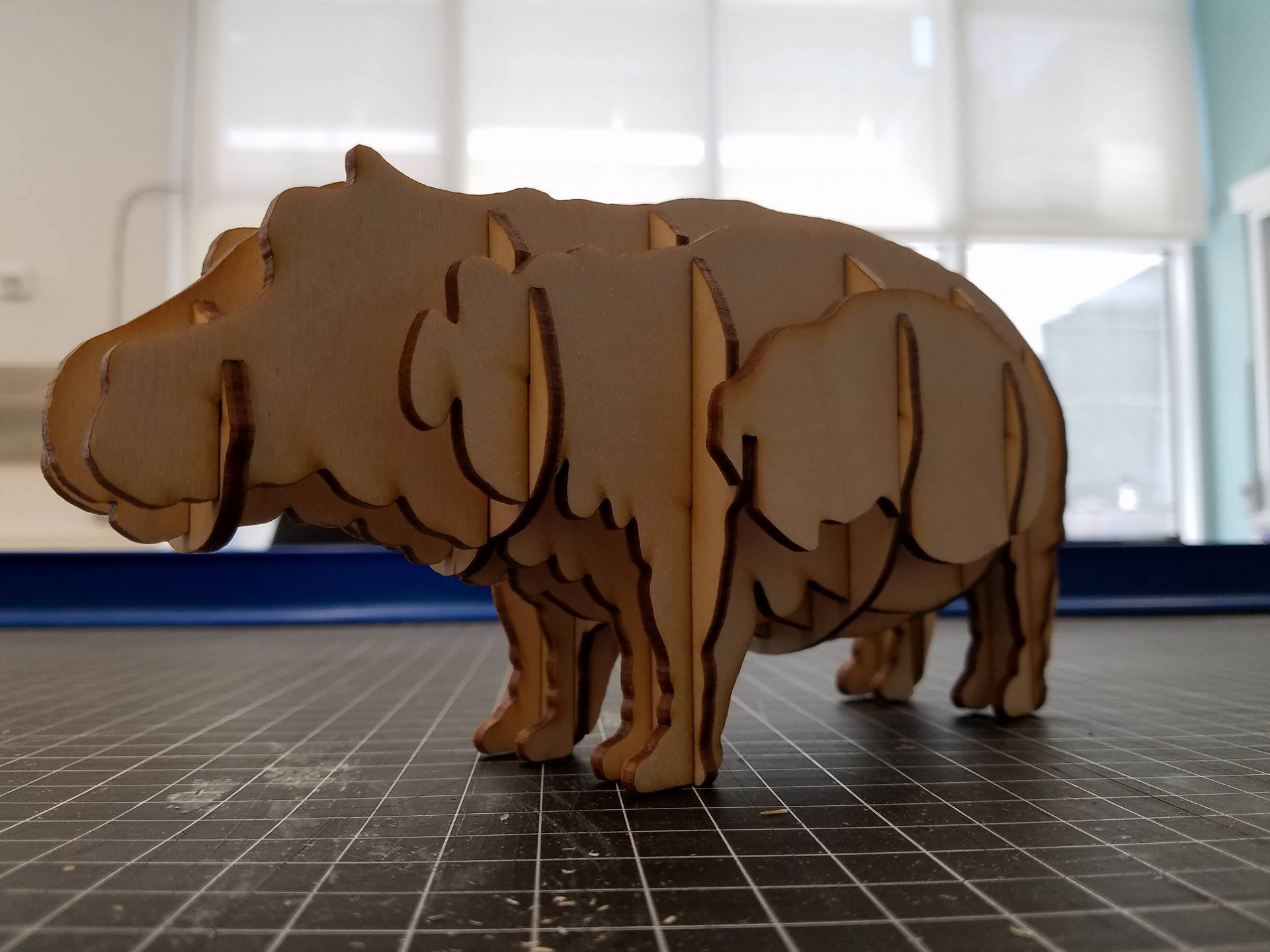
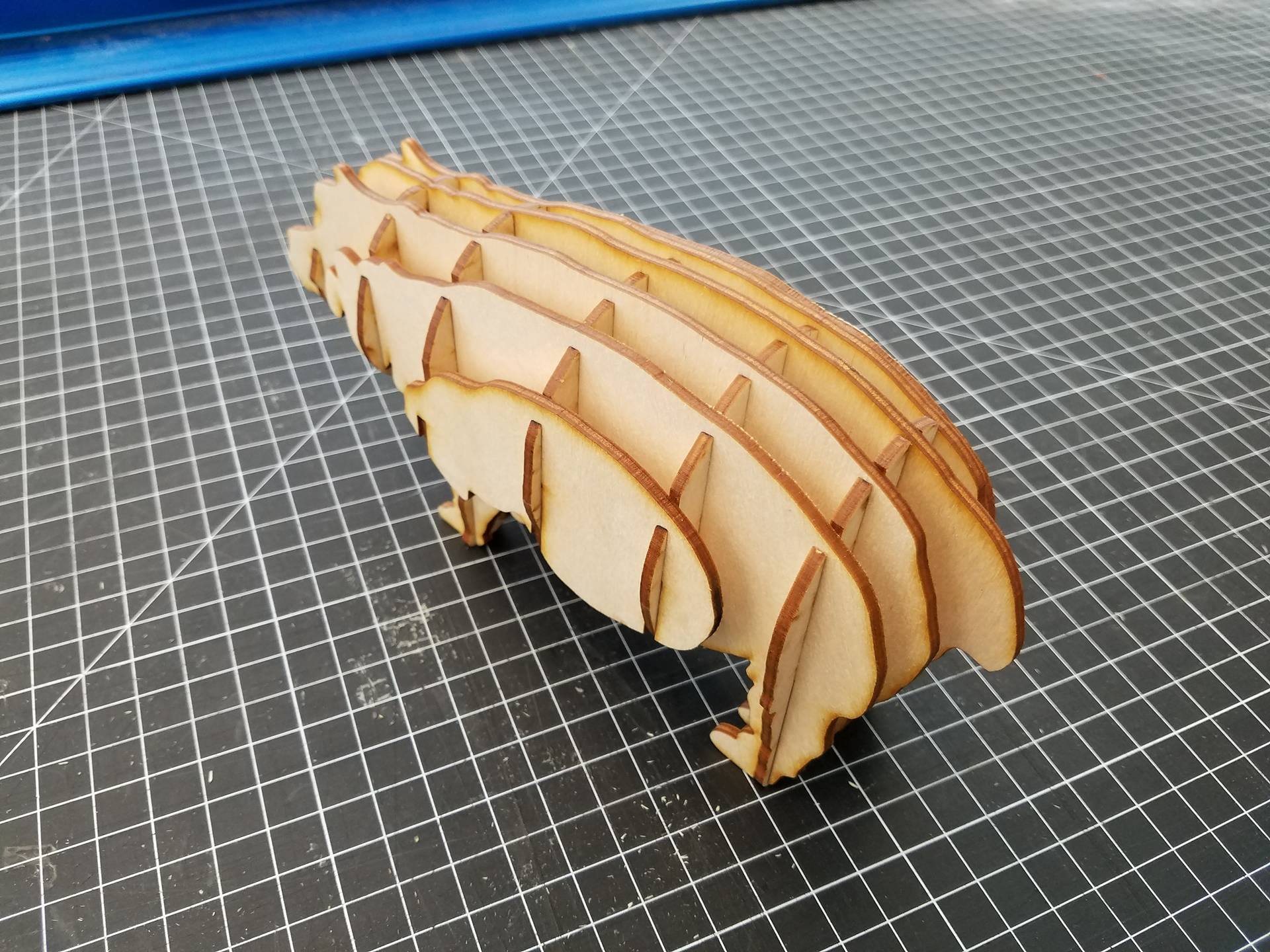
In this tutorial, we will be making a 3D hippo model out of 2D pieces. Please download the attached file 'hippo parts' (either the .ai and .pdf file work, depending on your software).
First, I would like to give credit to YahooJAPAN from thingiverse for the CAD model of the hippo I used to make the design. It can be found here: https://www.thingiverse.com/thing:182185
The CAD model of the hippo was 'waffle-ized' using a software called 123D Make, for those of you interested in making similar projects. It is a free software by Autodesk that can be downloaded here: http://autodesk-123d-make.en.lo4d.com/
I have a tutorial on my profile on how to use 123D Make, so check it out if you are interested in making your own models like this one.
Required tools:
CNC Laser Cutter
Calipers
Required materials:
A piece of 1/8" plywood 12" x 24"
Files:
Preparing the File
I chose to use a piece of scrap plywood that measured ~.120" thick. It's important to note that the thickness of your plywood will dictate the size of the hippo. If the thickness doesn't match up with the size, the slots will either be too small or too big for the pieces to fit together.
Use the calipers to measure the thickness of your plywood. The file I provided is meant for plywood that is .120" thick. If you use wood of a different thickness, the entire design file will need to be scaled by: (x/.120) * 100, where x is your material thickness. For example, using wood that is .135" thick, my scale factor would be .135/.120 * 100 = 112.5 %. This is a critical step, otherwise your pieces will not fit together.
The method for scaling will vary based on the software you are using. In illustrator, select everything and go to object-->transform-->scale. If you are using a different software with a different laser, I will assume you know how to operate the software and scale the file.
Laser Cutting the Pieces
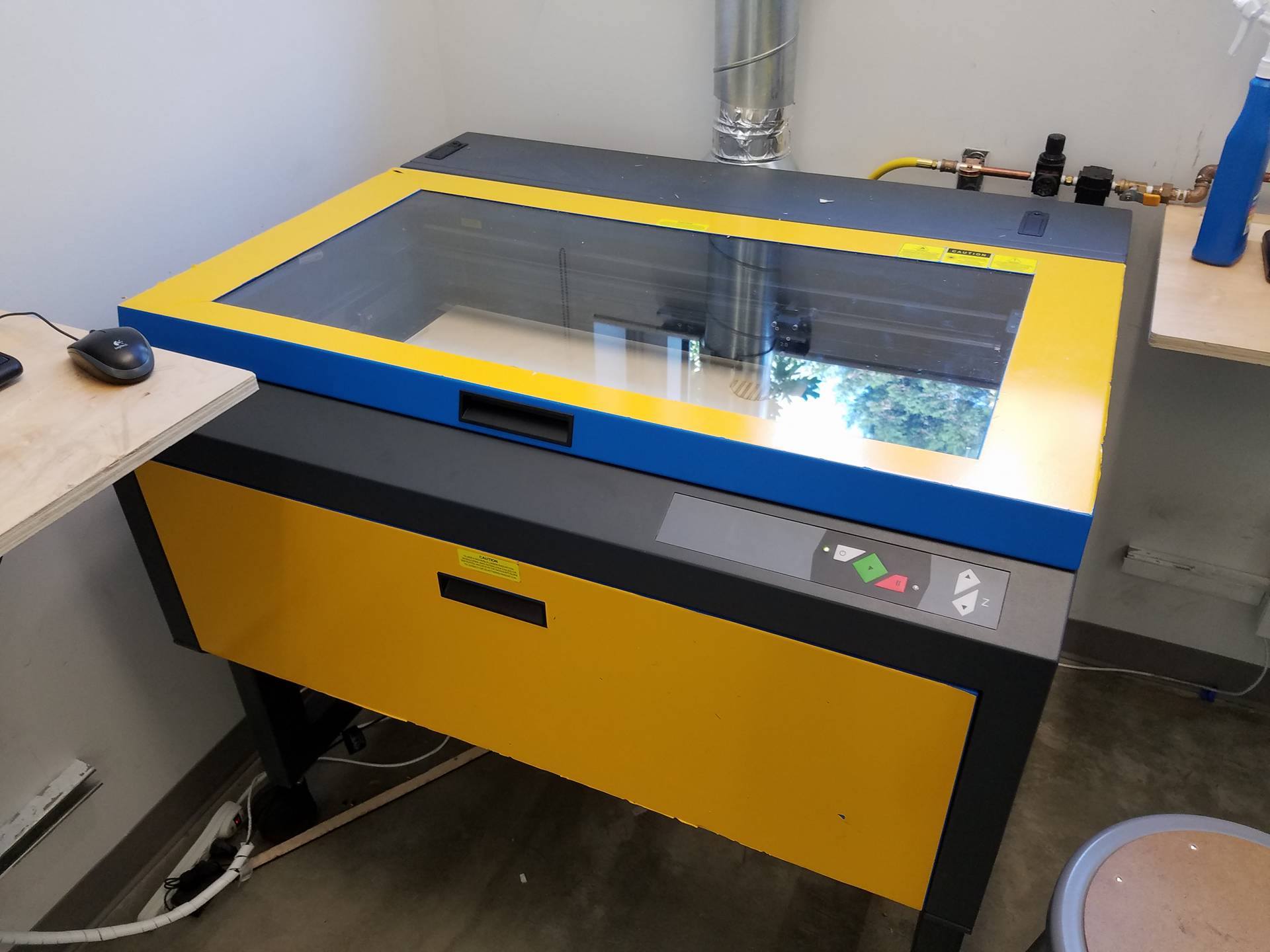
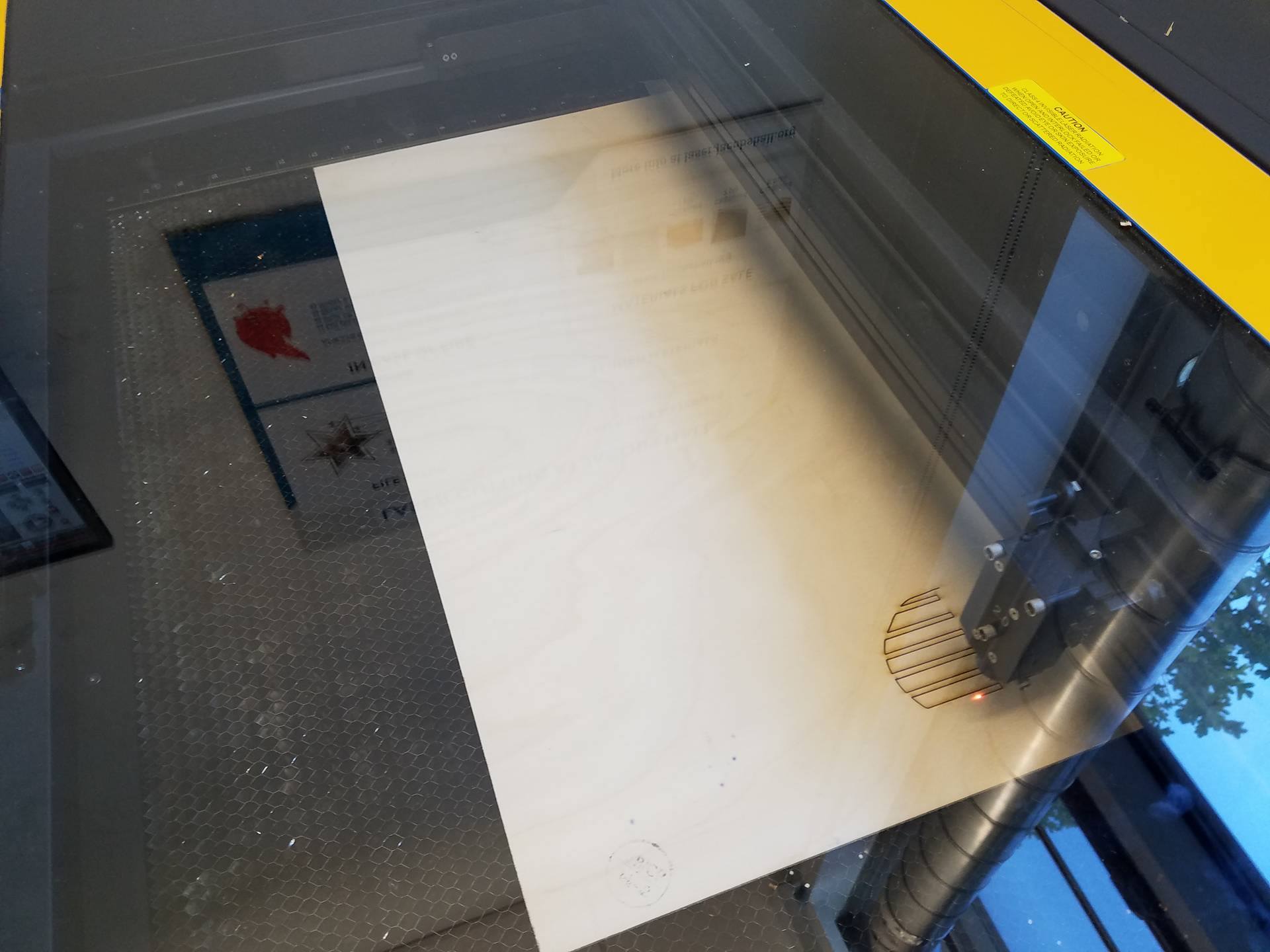
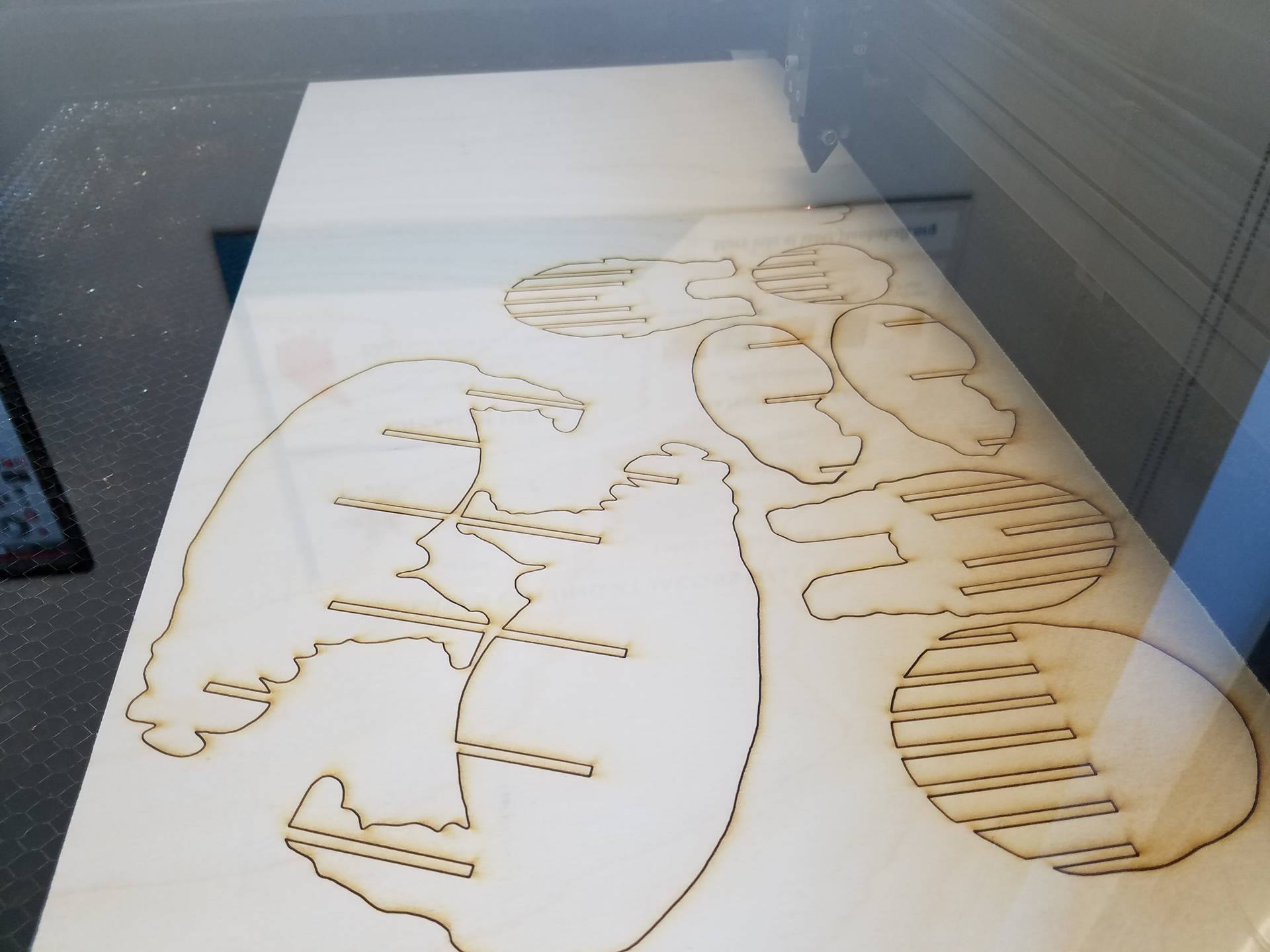
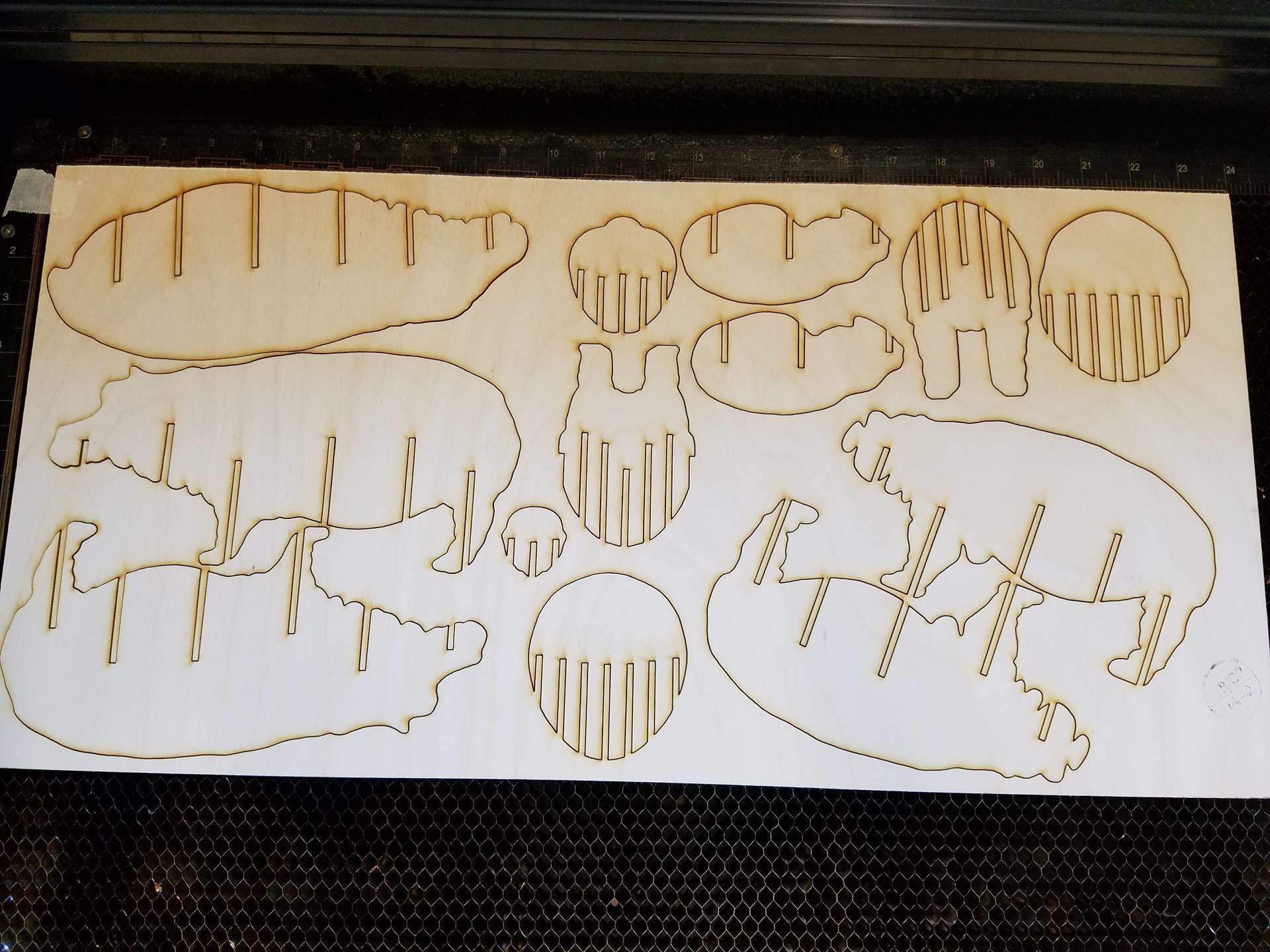
This tutorial assumes you have access to and operator's knowledge of a CNC lasercutter. As each machine's software and interface are drastically different, I'll have to assume that you know how to operate the laser cutter you will be using. The laser I used accepts illustrator files, which is why I uploaded the design as an .ai file. However, I also uploaded the .pdf for people who use a different software. Open the .pdf file in your laser's software, as pdf's are very standard file types and should be accepted by your laser's software.
Note: Each type of laser is different, and yours may use slightly different settings than mine, resulting in a different kerf. This could make the pieces not fit together appropriately. If the pieces are too loose, consider scaling down the file by about 5% and trying again. Likewise, if the pieces are too tight and don't slide together, scale the file up by about 5% and cut the pieces again.
Go ahead and cut out the parts using your laser, and head over to a work able where you can assemble them.
Assembly, Step 1
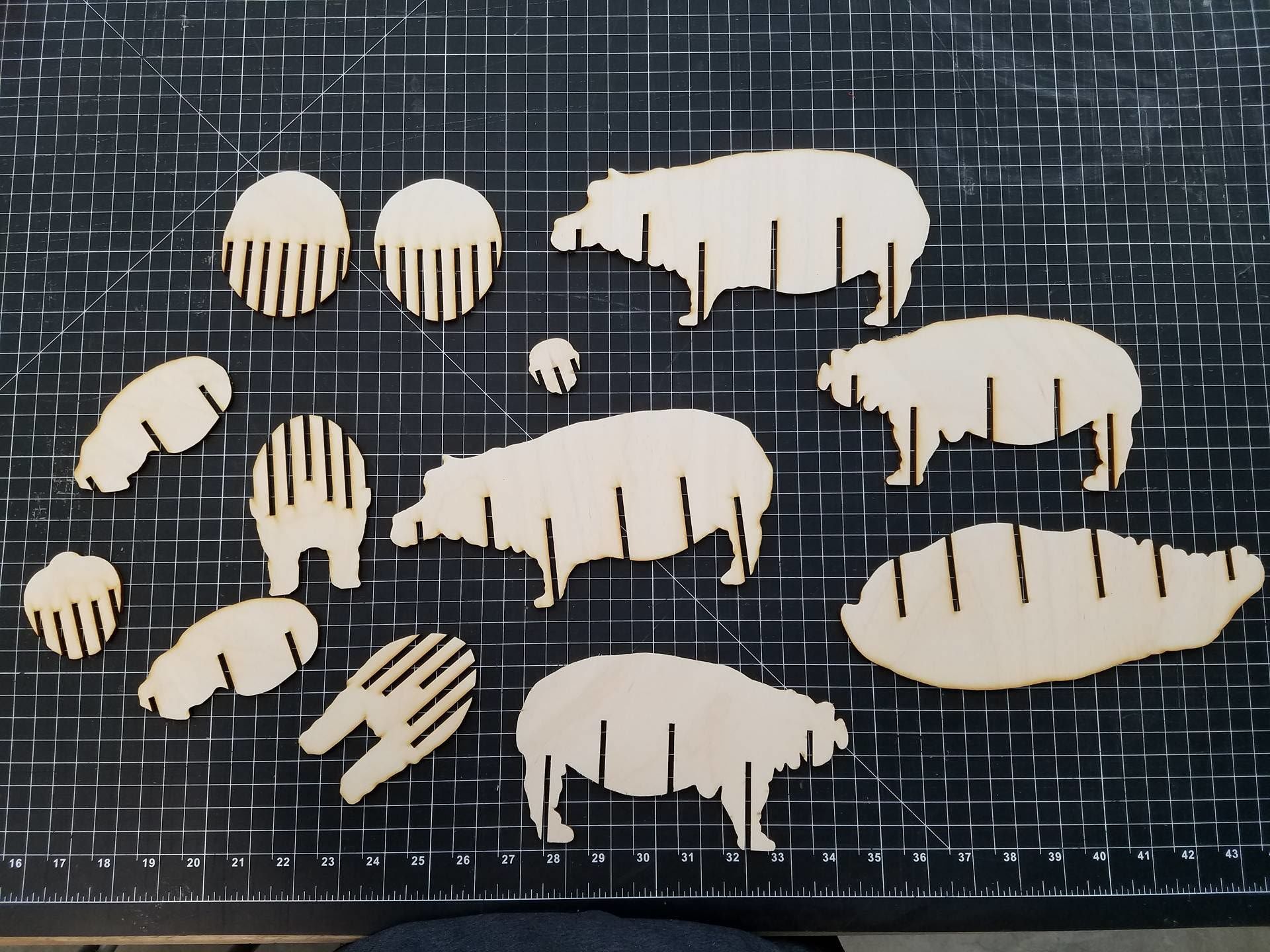
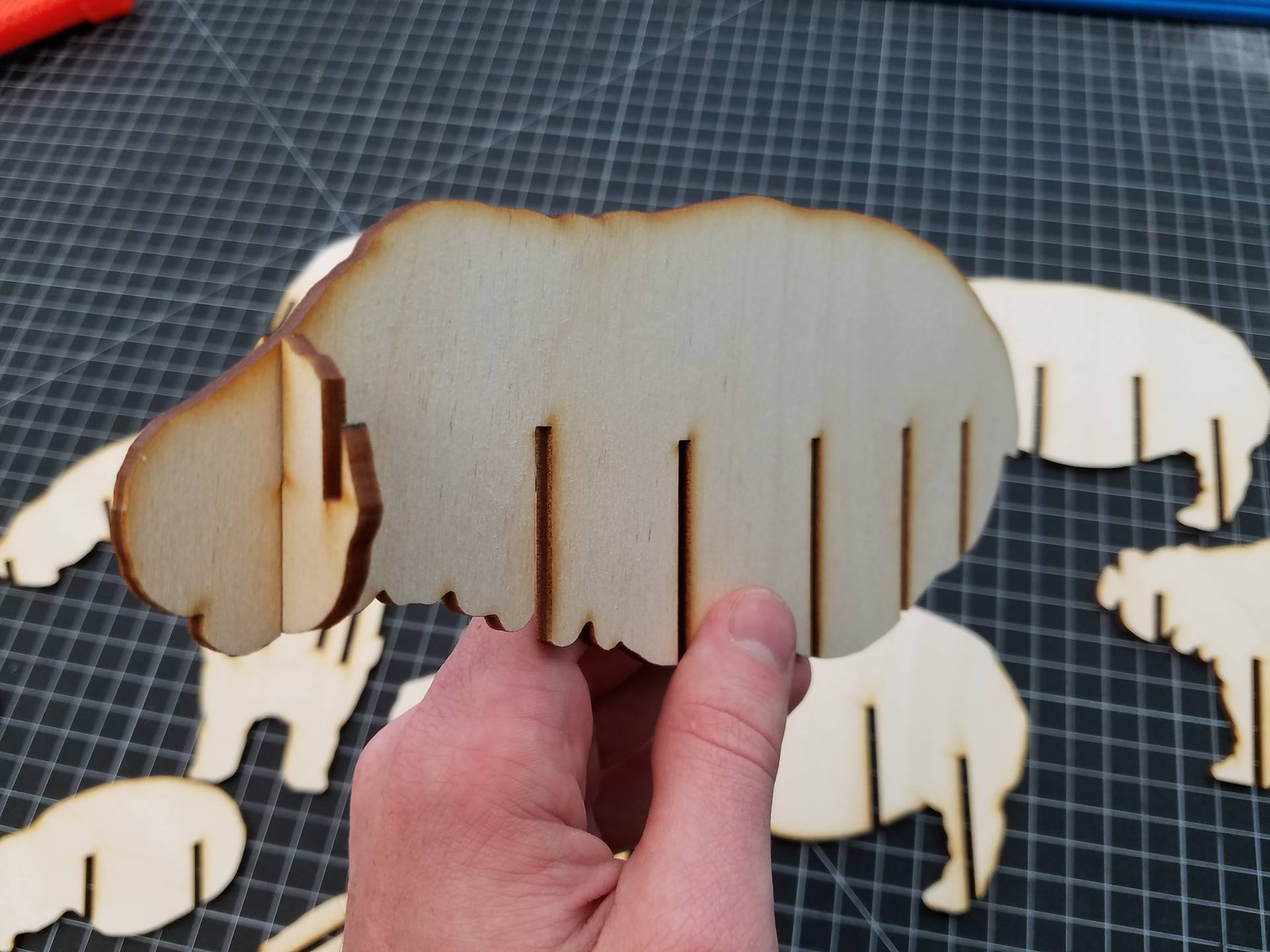
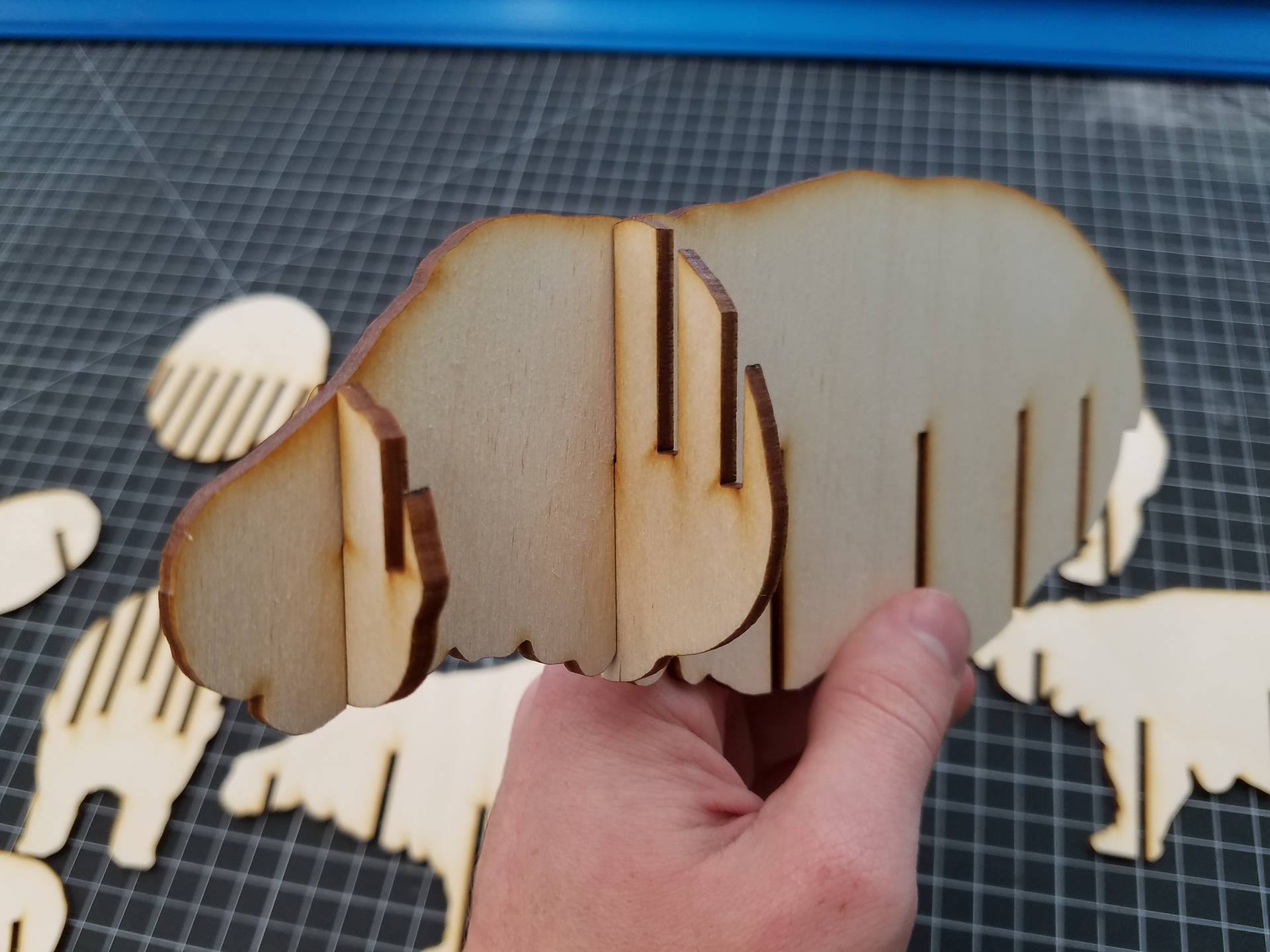
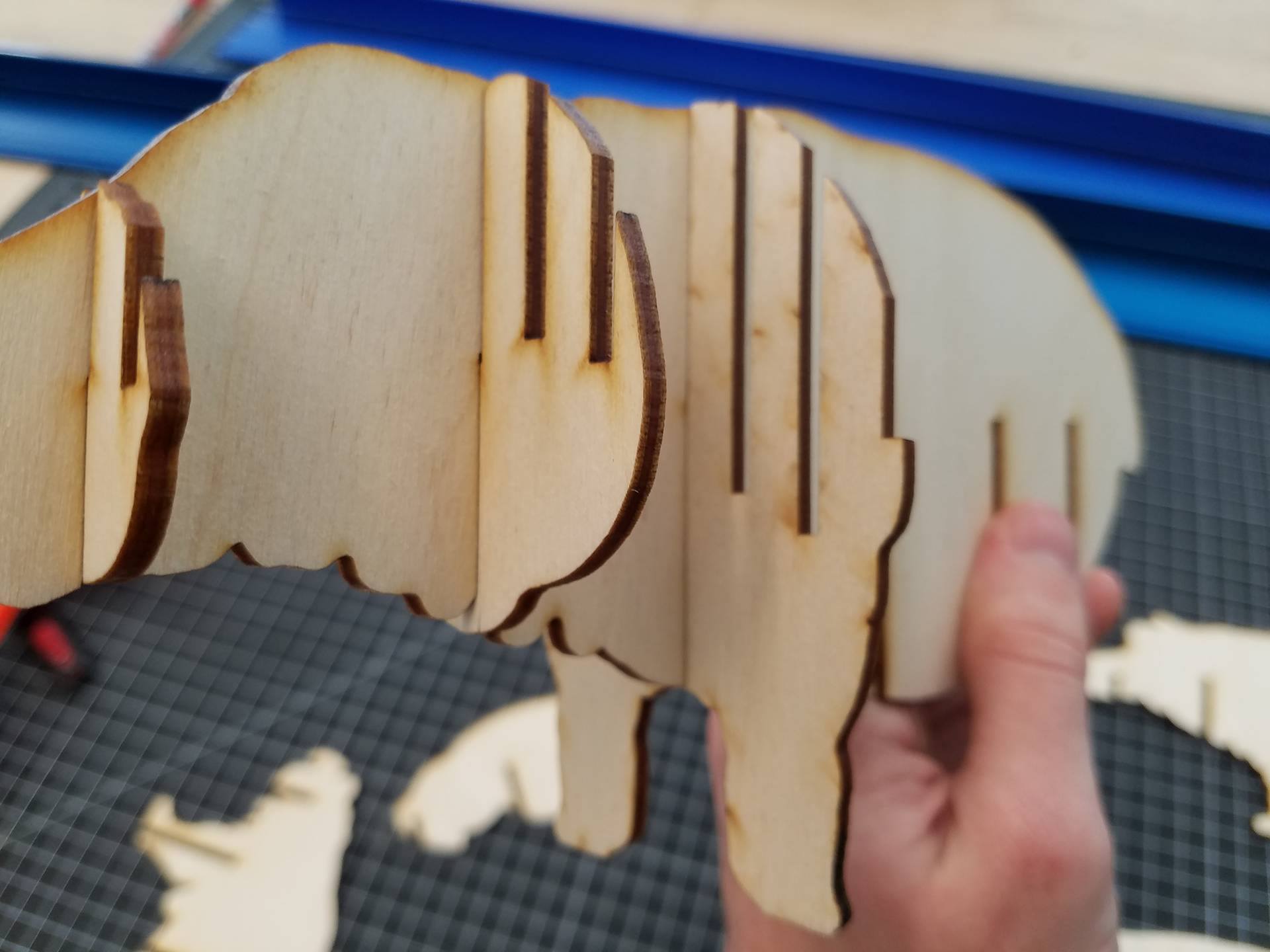
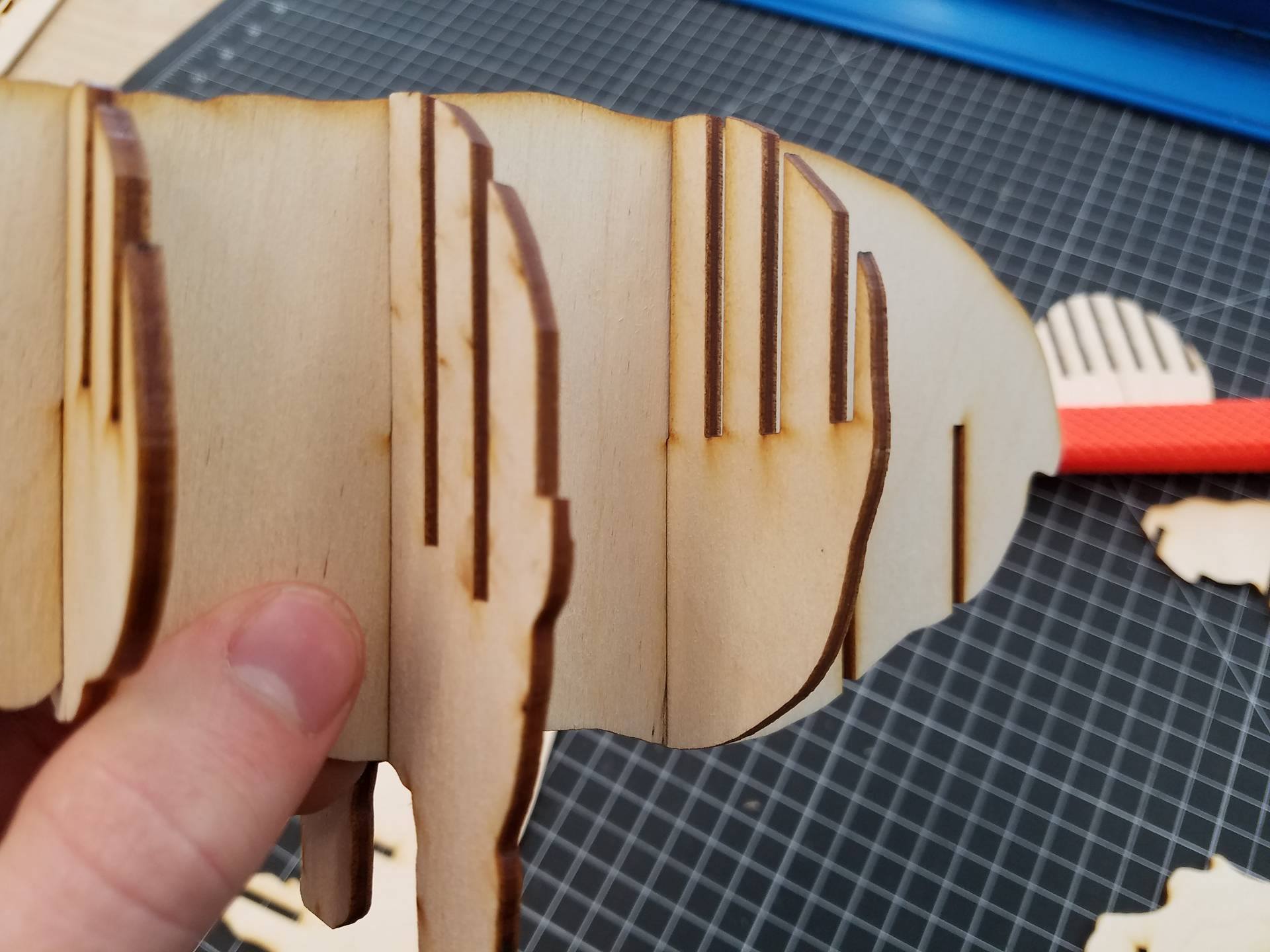
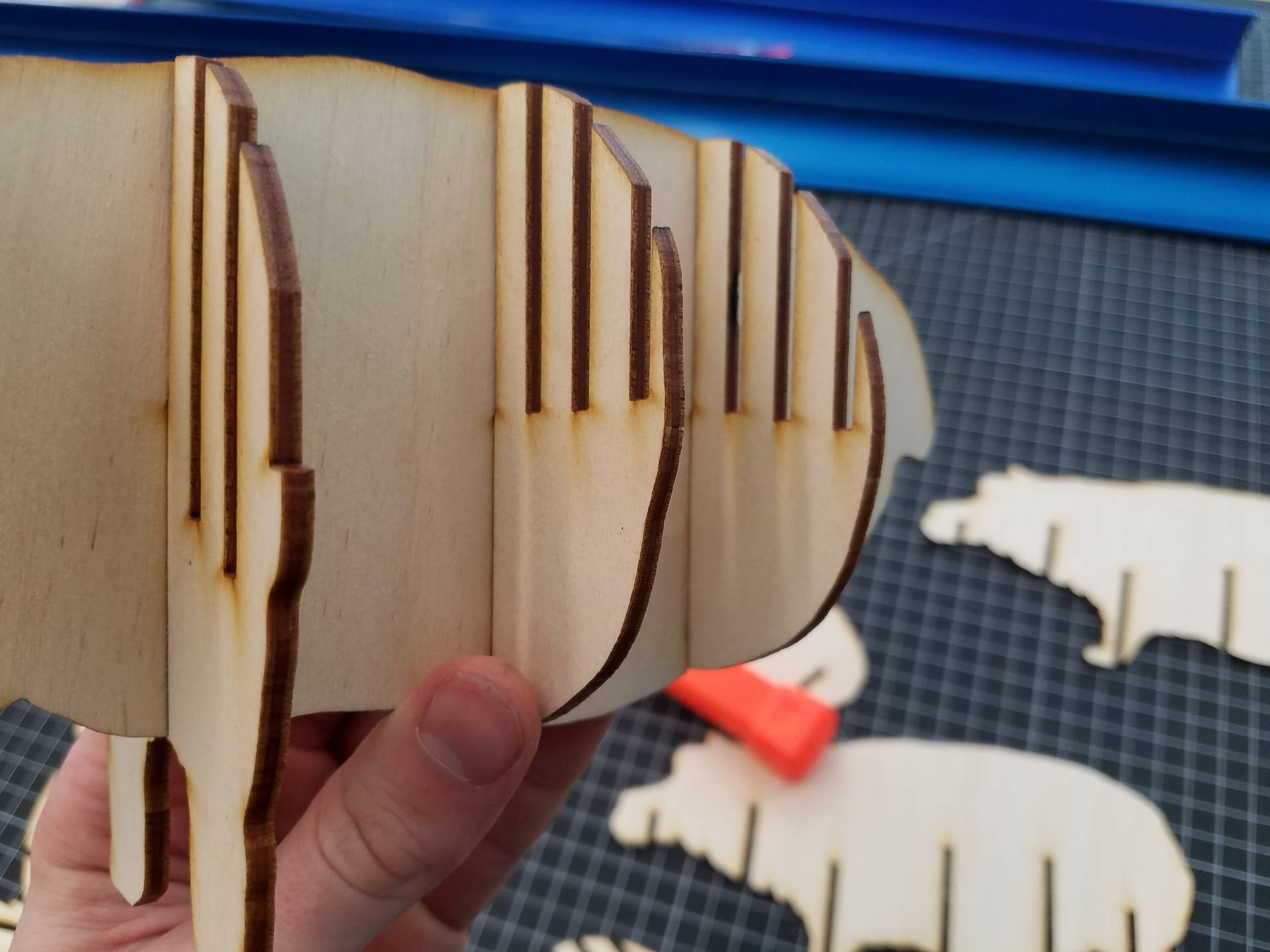
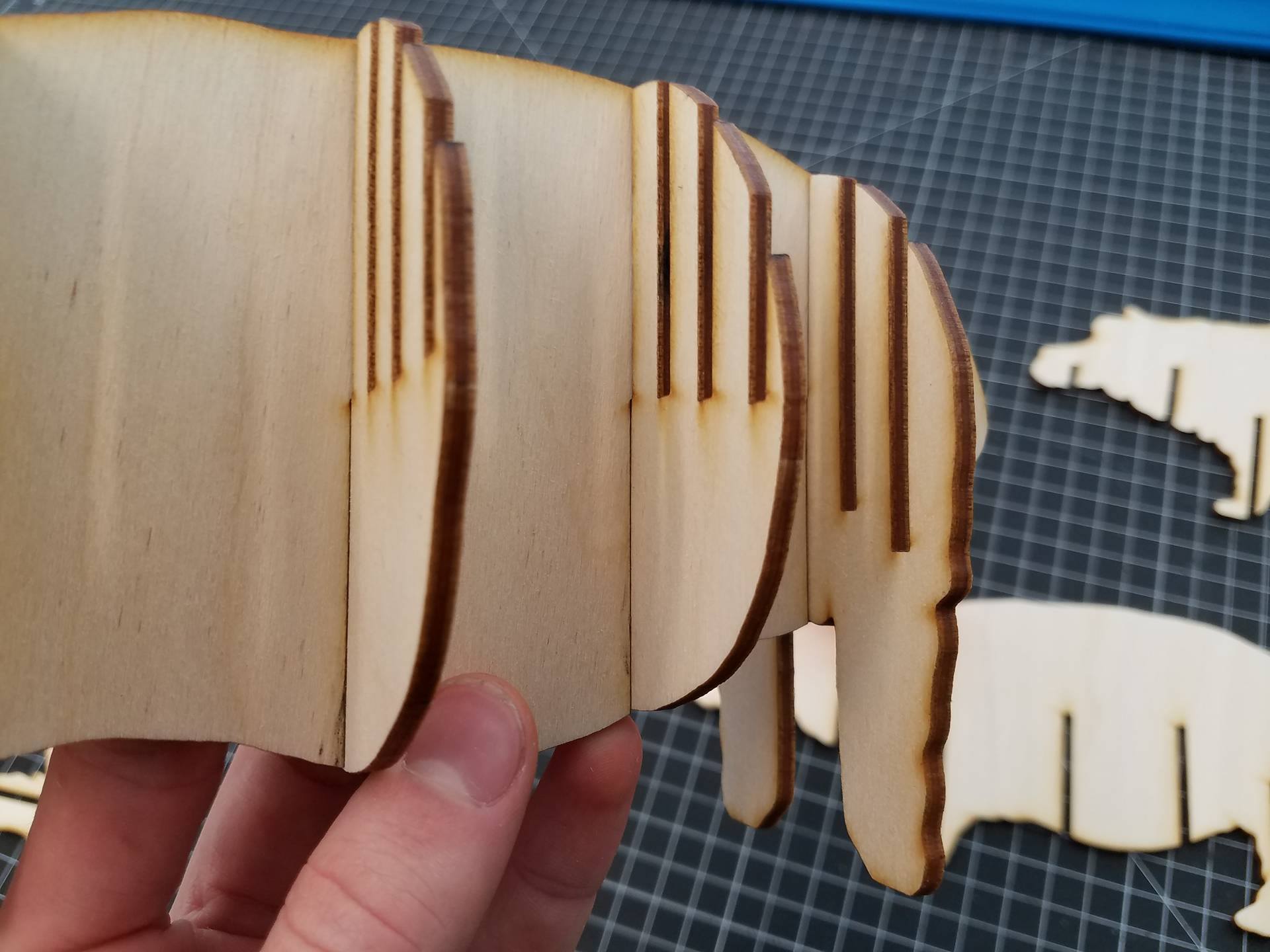
First, begin by laying out all the pieces. Take the largest piece, or the central body piece, and add the snout to it. Next, slide on the head piece. After that, we can add the front legs. The torso pieces come next. They look pretty similar, but the first one is a little less round than the second one (see pictures 5 and 6). Lastly, add the rear legs.
After your model has all the cross pieces added to the central long piece, proceed to step 4.
Assembly, Step 2
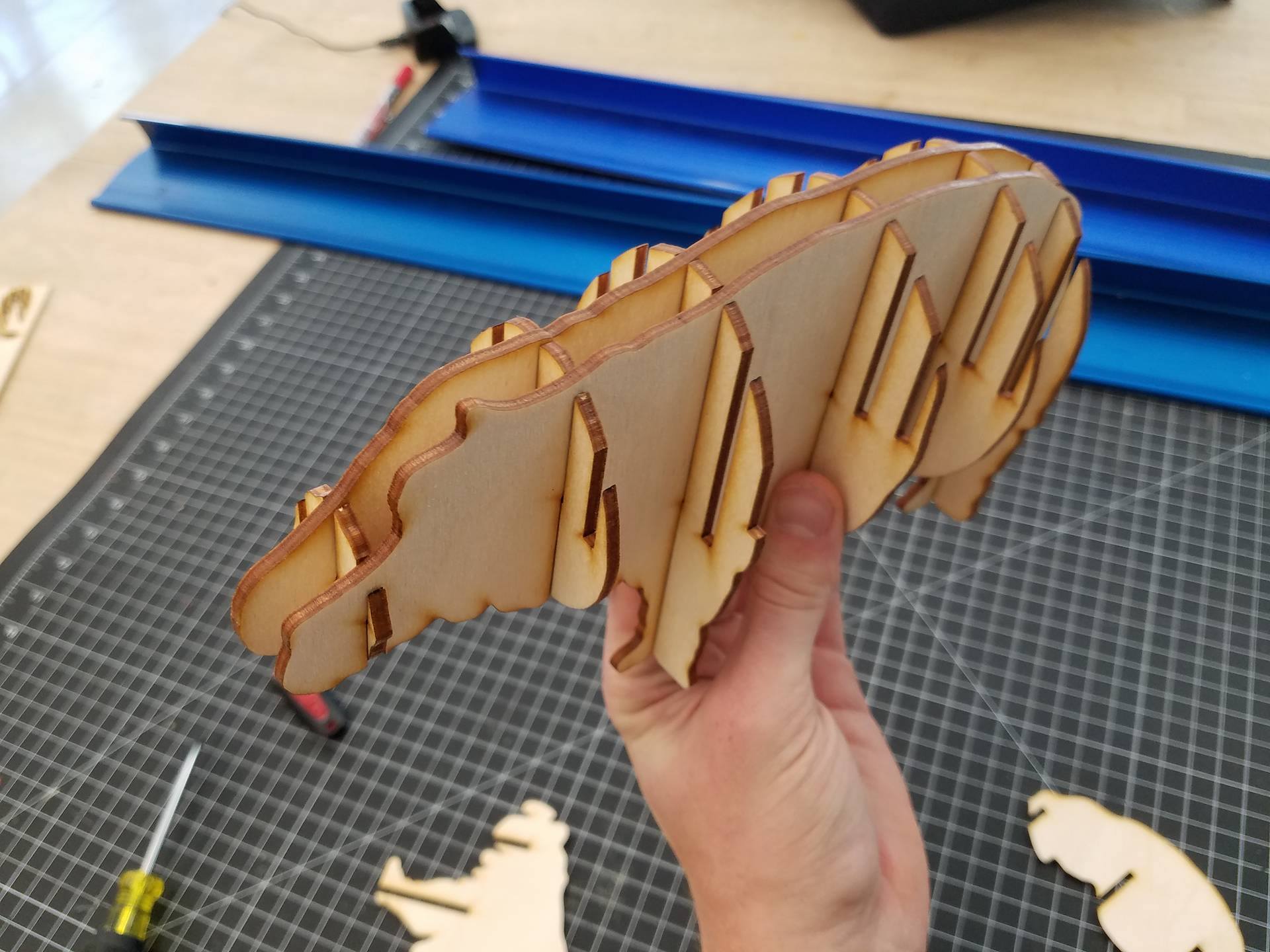
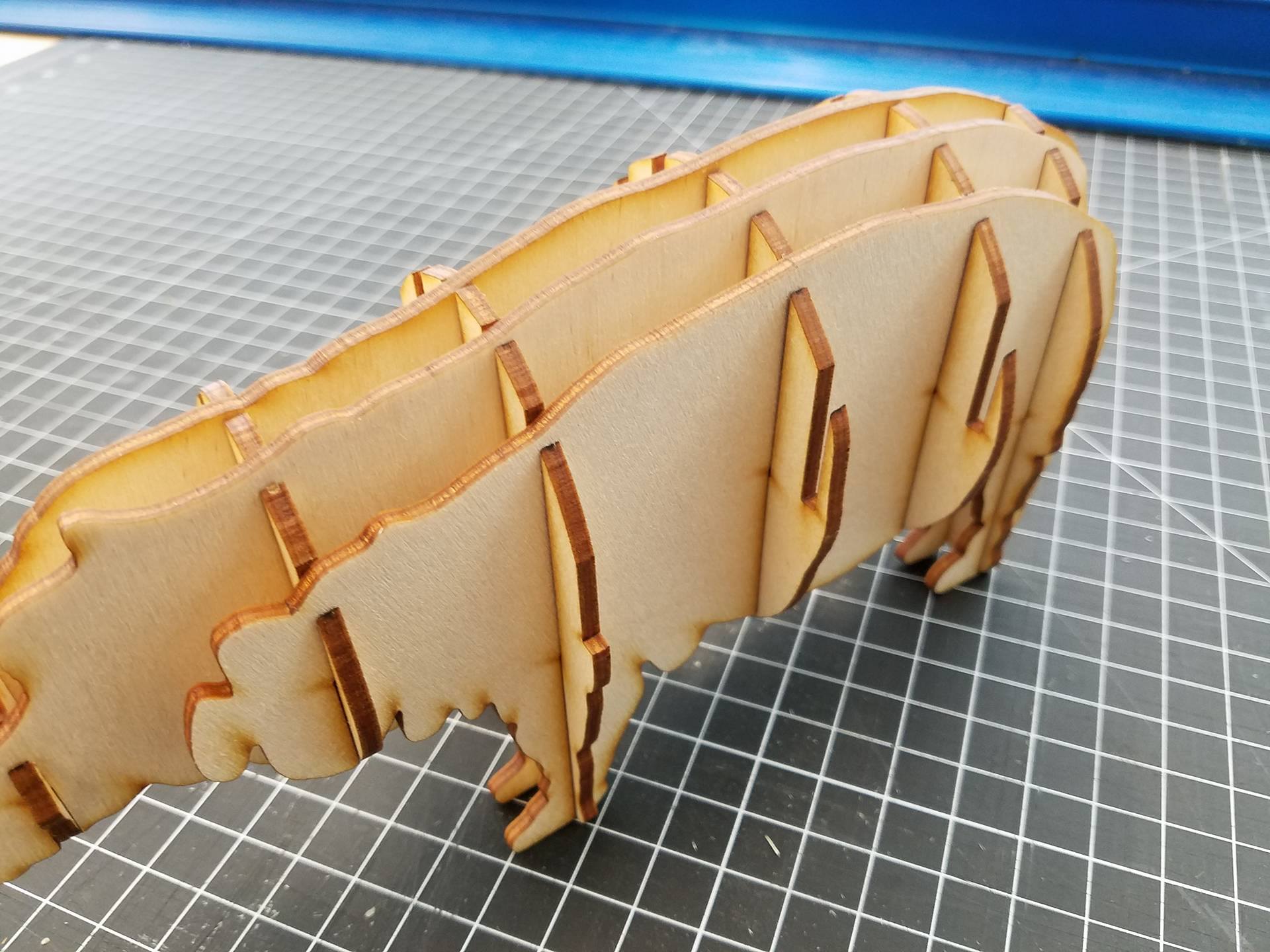
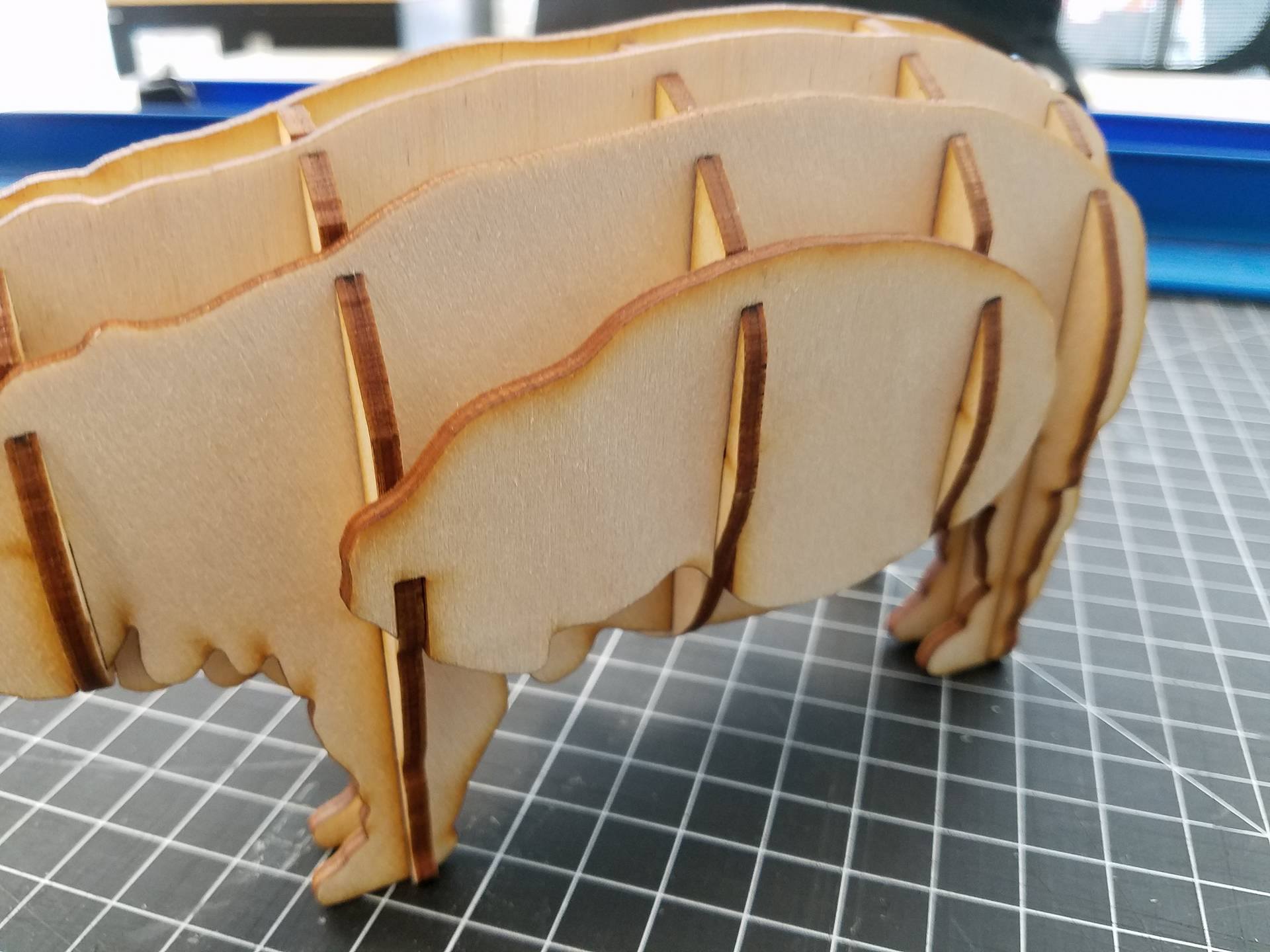
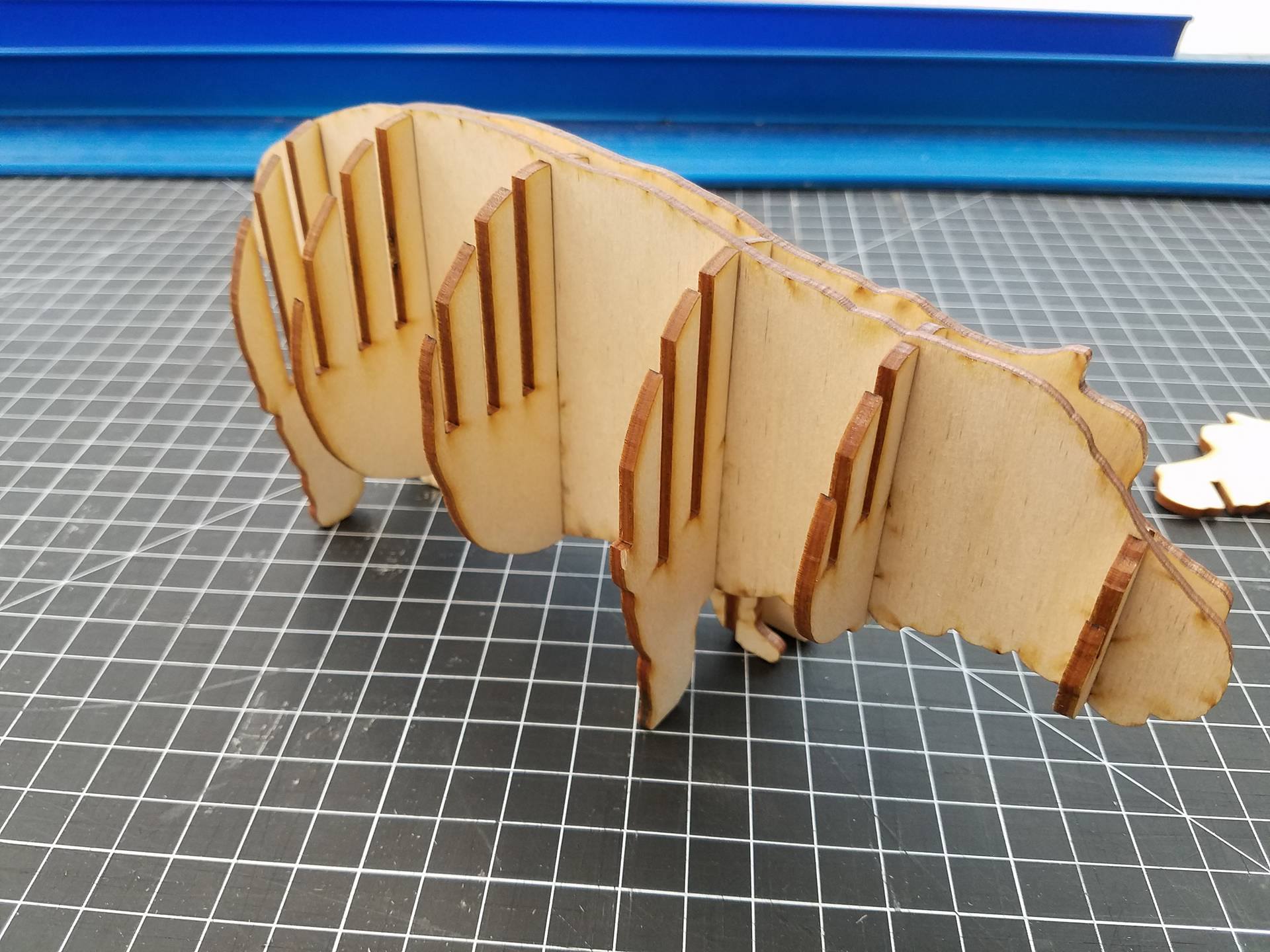
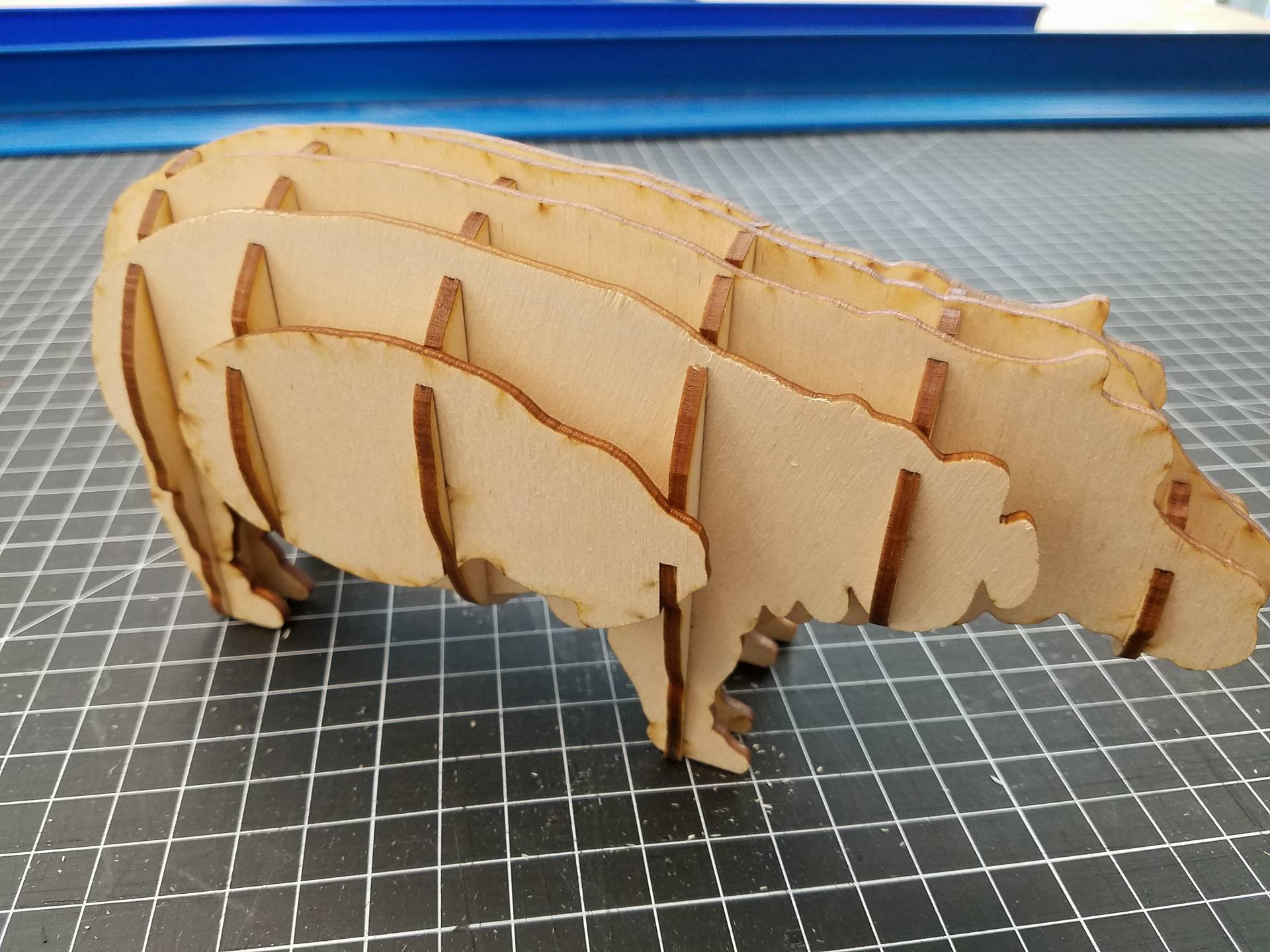
Next we are going to add the remaining long pieces. Start from the center, and work outwards. The first piece we will add is a leg piece. There are two types of body pieces with legs. We want the larger one. After this one is added, we will then add the smaller leg body piece. Finish up that side with the round oval piece. Then, repeat this with the other side. Note that some of these pieces may take some patience to add. You have to line up several slots, and keep the pieces perpendicular. If you still have a lot of trouble getting them to fit, see step 2.
Congrats, enjoy your hippo! If you like the model and would like to see similar projects, feel free to check out my profile. Also, if you have any questions about this project or would like me to make a particular animal or object, comment below and I will get back to you as fast as I can.